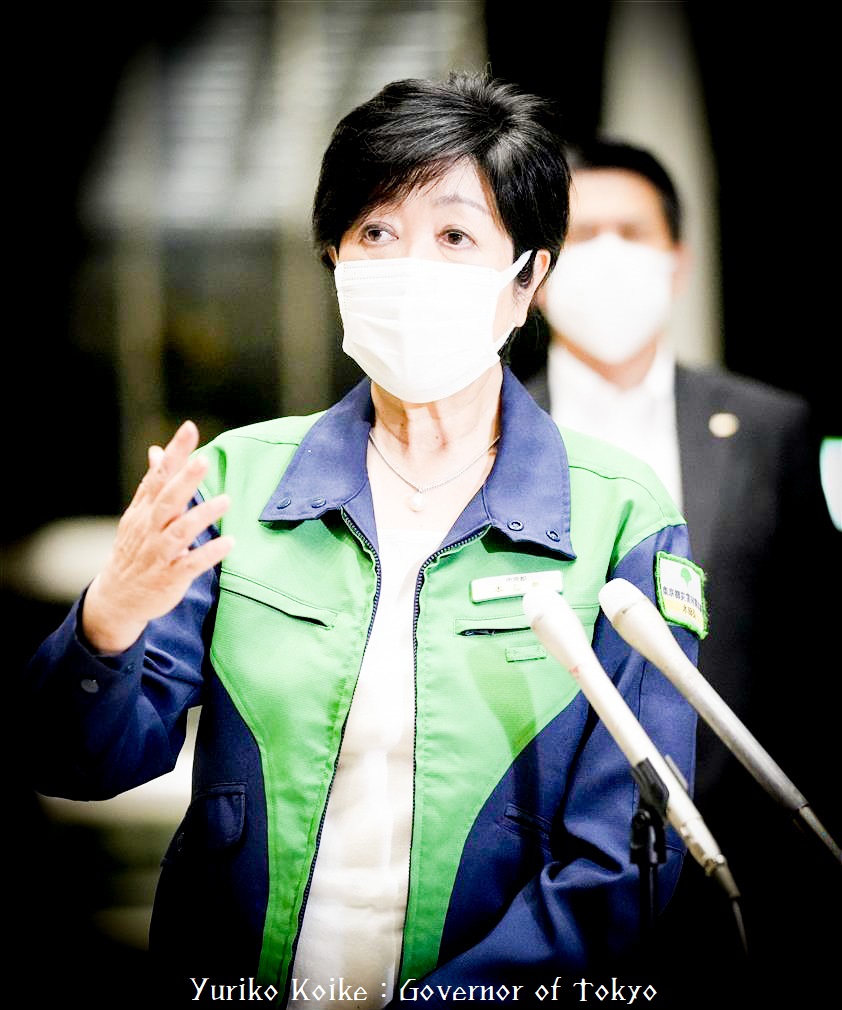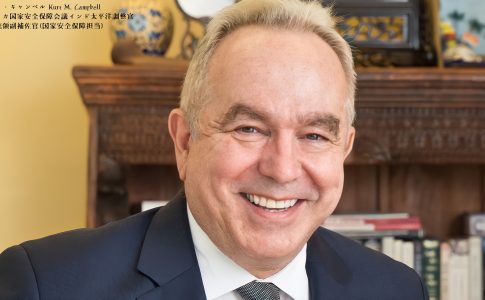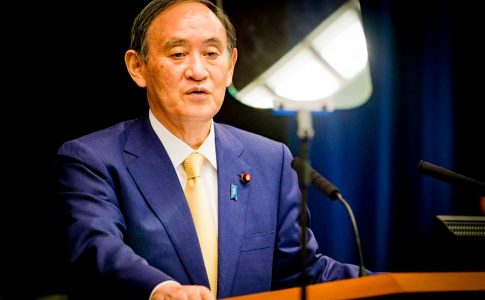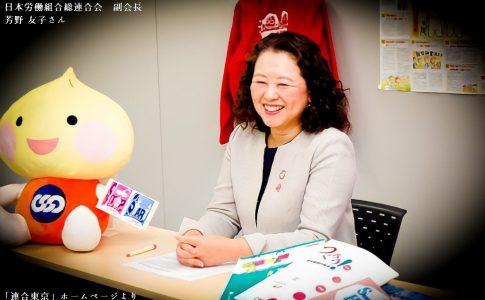Koike is the only powerful drug that has the potential to change the current politics, as the opposition cannot be expected to take over the LDP.
“It seems that the media is spreading rumors about the revival of national politics as a joke, but it is not in my mind.”
Tokyo Gov. Yuriko Koike’s statement on her return to national politics at a press conference on July 9 can be taken as a de facto announcement of her return. This is because, as common sense in political terms, such expressions are rather idiomatic expressions used when one is “in the middle of the head.”
This expression is often used by incumbent prime ministers to refer to the dissolution of the House of Representatives. The first person to use the term was Eisaku Sato, the second-longest serving prime minister in history. Sato dissolved the lower house twice while in office, but when asked in advance by reporters, he replied, “It’s not in my head.” After the dissolution of the lower house, he was accused of lying and gave a frank answer. Former Prime Minister Shinzo Abe used this expression for the first time in about half a century. He was familiar with the political history and borrowed the phrase of his great uncle. I once mistakenly said “It’s not in the periphery of my brain. (located in the middle rather than in the periphery)” After stepping down, he said, “I was always thinking when to dissolve the House of Representatives.” Koike used a trick in which the prime minister evaded the dissolution of the House of Representatives to disguise his career change. Even if she said this without knowing it, she must feel that such arrogance is natural for her ambition to become the first female prime minister.
“Monster Koike” created by the media
On July 4, the day after he strongly impressed his presence in the Tokyo Metropolitan Assembly election, she boldly boarded the headquarters of the Liberal Democratic Party, which had suffered a crushing defeat, and held a meeting with Secretary General Toshihiro Nikai, asking him to support his return to national politics. The press will naturally ask about his return to national politics. Koike replied, “I have never expressed my intention (to run the country), ” but did not say,“ I have no such intention. ” At a press conference on May 9, she said with a wry smile, “If you say you’ve never said anything, it makes me wonder if you have.” It is a common practice of playing with the media and raising expectations. If you really don’t want to come back, you can just deny it. “I will not return to national politics. She was re-elected last year with the second-largest number of votes in history. I am determined to complete my four-year term and devote my whole life and soul to politicians for Tokyo.” she said. But I won’t. Keep it on and keep it on.
When she was admitted to the hospital three days before the announcement of the election, citing excessive fatigue (Overwork? The name of the disease in the diagnosis is the same as the academic background of Cairo University graduate.), and held a press conference two days before the election, he said, “This is the most important time for Tokyo. I may have fallen down suddenly somewhere, but I want to carry it out thinking it is my desire.” However, she never said, “If I’m going to fall while I’m serving as governor, that’s my dream.” Koike’s remark can only be understood if he or she hears what he or she does not say.
In 2016, her transition from a Diet member to a Tokyo governor was won against the Liberal Democratic Party (LDP), as she had given up on the idea that even in the LDP, which was “the strongest Abe,” it would only be a matter of keeping and killing. In the Tokyo Metropolitan Assembly election held in July 17, he defeated the Liberal Democratic Party by winning a majority with the support of the “Tomin First Group,” a local political party he founded and represents. However, immediately after the election, the leader of the association resigned. She then formed a new national political party, the Party of Hope, and became the leader of the party. At that time, her infamous remark, “We will eliminate lawmakers who do not agree on security and constitutional reform policies,” damaged public trust. I barely missed the chance to conquer the country. After her retirement, Abe even looked back and said, “That was the most dangerous time I had been in office for seven years and eight months.”
She started with the Japan New Party led by former Prime Minister Morihiro Hosokawa. She was a tozama (outsider) who joined the Liberal Democratic Party, going from the Shinshinto Party led by Ichiro OZAWA to the Liberal Party and then to the Conservative Party. Even a political bird is hated by the LDP, but the LDP, which has been obsessed with the political world, has turned a blind eye to the LDP, and has even attempted to take over the main house. Since the second floor is the only lodging tree and a lifeline, she often visits, meets and shows off his relationship. So what is the reality of the relationship between Nikai and Koike? It is nothing but the ultimate relationship of utilizing each other and pretending each other.
The meeting at the LDP headquarters on July 5 took 40 minutes. While she said she was talking about cooperation on coronavirus and economic measures, she did not appear to have had any serious closed-door talks, with only harmless topics. The second floor groaned about “She’s always looking far away. No one knows what you’re thinking.” But when asked at a press conference about Koike’s return to the Diet, he said, “We welcome her very much if she returns to the Diet.” Koike replied, “I want to thank you for your constant guidance.” In the midst of the current political situation, where the party is desperately trying to defend itself against attacks from the 3A (Abe, Finance Minister Taro Aso and LDP Tax Research Council Chairman Akira Amari) on the post of party secretary general, the upstairs teases Koike, saying, “If it comes to the crunch, we will go for a big fight, cutting Kan.” Koike hinted at the possibility of returning to the party despite the opposition of the LDP as a whole, saying, “With Nikai’s sturdy skills, he may be able to return to the party.” If you calmly think about it, they are both yakuza threats, but they use the mass media to amplify their self-image. Former House of Representatives Speaker Bunmei Ibuki said, “The mass media is turning Koike into a monster.”
Governor Koike wants to quit metropolitan government as soon as possible.
Historically, there is no meaningful connection between Nikai and Koike. Koike has always lived by hanging on to the best men in politics of the time. Former Prime Ministers Hosokawa, Ozawa and Koizumi Junichiro are the leading candidates. Nikai had been a close aide to Ozawa for a long time, and after returning to the Liberal Democratic Party, he rose to power through serving Koizumi and Abe. Koike, however, does not care. When the Conservative Party, with which Koike and Ozawa lived, broke down and they both fled to the Liberal Democratic Party by twos and threes, Koike approached Koizumi on his own and belonged to the Mori group (Seiwa Kai) of the time. It soon became factionless. I didn’t get the help of upstairs.
Nikai first formed an independent ‘Nikai Group.’ Joining the Ibuki faction (Shisui-kai) at that time, the smaller faction took over the bigger. The two approached each other during the Abe administration, when former Vice President Taku Yamasaki and former Secretary General Tsutomu Takebe called out to Nikai and Koike to show off their influence. The two have already taken into account the misinterpretation that a well-informed person who does not know historical facts mistakenly describes him as “a sworn ally since the Conservative Party.” A virtual image is a combination that expands a virtual image. Only the obsession of the class A war criminals with the unethical power of the tozama migratory birds connects them.
It is obvious that Koike is not serious about the metropolitan government. Her campaign pledge in her first term, “Seven Zeros,” (Waiting list for children, resignation from nursing care, overtime work, utility poles, crowded trains, Tama disparity, and disposition of pets). “No slaughter” was realized in fiscal 18, and “0 overcrowded trains,” which called for the introduction of double-decker railcars, is said to be “mostly resolved” due to telecommuting and staggered commuting caused by COVID-19, but the rest have disappeared. The catchphrase of TV flip is the only thing that dances about corona. “Lockdown”, “Three ‘C’s (‘Colse’s)”, “Five Lessons”, “Special Summer”, “Tokyo Alert”, “With Corona”, “Stay Home”, “It’s 8 o’clock. Let’s all go home” …… There are some that don’t make sense. Three ‘C’s is the only one that remains.
On the other hand, she was left behind in all the steady countermeasures. Delays in the development of wards for the seriously ill, stagnation in benefits, disputes with the government in industries requiring leave from work, confusion in shortened working hours and self-restraint in alcohol consumption, obsession with Olympic PV (public viewing) …… The re-spread of the infection in Tokyo is largely due to poor administration of Koike. Nevertheless, the government’s image strategy, in which the four governors of the Tokyo metropolitan area declared a state of emergency and requested no spectators at the Olympics, made the public think that the Koike administration is doing its best despite the government’s straying attitude, has been effective. The turnaround at the end of the Tokyo Metropolitan Assembly election showed the sharpness and power of the Koike Theater for the first time in a while.
After the Olympics, however, the metropolitan government faces a number of challenges, including a decrease in ticket fees for those who do not have an audience and a huge financial burden from the provision of coronavirus relief benefits. There is no guarantee that the spread of the coronavirus will stop. For Koike, who has long been indifferent to the administration and policies of the metropolitan government, the administration after the Olympics is nothing but a burden she wants to throw away as soon as possible. However, as with the 2005 dissolution of the Koizumi Postal Service, when she was running for the Tokyo gubernatorial election or as a parachute assassin, his next return to national politics is not a turnaround that can be realized if she makes a decision on his own and jumps off a cliff like lightning. At the very least, Koike’s fans need to have enough power to raise their hopes of winning the reins of government.
The magma of the new gubernatorial party is moaning behind the scenes. The nation reaffirmed the authority and ability of the governor in each prefecture’s response to the coronavirus. “Good governors” and “bad governors” were singled out. There is no doubt that the public wants the central government, which has been in a prolonged slump, to be shaken by its experience in local administration. People who saw Koike’s comeback in the Tokyo Metropolitan Assembly election must have imagined that they would have no choice but to choose a political party in their hometown. It is highly likely that the delay in vaccinations and the atmosphere surrounding the Olympic Games without spectators will accelerate the move away from the LDP even before the lower house election. However, existing political parties such as the Constitutional Democratic Party of Japan cannot accept the idea. In that case, it is a plan to form a new party by the heads of local governments who were in the spotlight due to the coronavirus.
Ueda Kiyoshi prepares to launch a new party
It is not widely known that former Saitama Governor Kiyoshi Ueda, a 73 year-old lawmaker in the current upper house, had already begun preparations to launch a new party in August. Ueda is close with Koike and Omura Hideaki, the governor of Aichi Prefecture, who served 5 terms as a lower house member and 3 terms as a governor at the age of 61. Ueda’s covert actions are likely to lead the Koike New Party.
It is common sense that Koike is unlikely to run in the next lower house election. But the next lower house election may be four years away. Koike turned 69 this July 15. Even if he runs in next summer’s House of Councillors election, she will not be able to target the prime minister. There is only a limited amount of time left. Depending on the circumstances of the Olympic Games and the corona, the possibility of returning to national politics may not be at all impossible, so Koike is preparing for the possibility with a small possibility in mind. In 17, the Liberal Democratic Party (LDP) was stunned by the prescient nature of its campaign film, which it produced more than a month before the dissolution of Abe. Tokyo Constituency No. 9 of the House of Representatives is a vacant constituency in which former House of Representatives lawmaker Kazuhide Sugawara was banned for illegal donations to voters. Koike lives in Nerima Ward, Tokyo, and was elected to Tokyo’s 10 wards when she was a member of the House of Representatives. It is said that she is certain to win the election even if she is in the ninth district. Even if she does not run in the next House of Representatives election, she could join the new party as governor and become the strongest supporter of the new party.
Depending on the timing and momentum of the new party, former Kanagawa Gov. Shigefumi Matsuzawa, a member of Nippon Ishin no Kai (Japan Restoration Party) and a two-term upper house member, a three-term lower house member and a two-term governor at the age of 63, may join the party. Tokushima Gov. Kamon Iizumi, a former government bureaucrat who is now chairman of the nation 60’s governors, is also believed to be aiming to run in the next lower house election, taking advantage of a situation in which incumbent House of Representatives lawmaker Masazumi Gotoda, who lives in Tokushima Constituency No. 1, has been involved in an internal feud with LDP prefectural assembly members. If it is advantageous to avoid an internal conflict in the LDP and take advantage of the nationwide trend toward a new gubernatorial party, the future course of action will be uncertain. Starting with Koike, Ueda, Omura, Matsuzawa, and Iizumi …… If so many experienced and experienced governors gather together, it will be possible for the LDP and New Komeito administrations to fall short of their majority. If a coalition government without the Liberal Democratic Party, New Komeito and New Komeito is formed, it would be when Koike becomes prime minister.
Koike’s dream is to return to national politics.
The Nippon Ishin no Kai (Japan Restoration Party), which has no presence in the Tokyo metropolitan assembly election and cannot become a national political party, will have to make a choice. There is a good chance that the destitute NMDP will join the Koike administration. What will former LDP Secretary General Shigeru Ishiba do if that happens? Ishiba’s faction is under 20 in the party’s presidential election, and it is uncertain whether there will be a presidential election. This is a reenactment of the Hosokawa-non-LDP coalition government when Koike first entered national politics. Like a rare schemer, Koike’s idea is always based on “Dream of political debut, once again”
On July 9, when the Tokyo metropolitan assembly suffered a crushing defeat, former Defense Minister Gen Nakatani of the Liberal Democratic Party said at a factional meeting that the LDP should seriously consider joining forces with the new Koike party after the lower house election to stabilize the political situation. He seemed to be bizarre, but he said, “The next time Koike appears and grapples badly, his life is in danger. I’ll just hug you.” on the second floor of the party.
It is true that there is no justification for Koike to resign as governor of Tokyo and return to national politics after the Olympics due to the coronavirus. But the public’s eagerness for Koike, regardless of policy or ideology, calls for a shock that can open a hole in the political stagnation and stagnation that has been too long since the Abe administration.
Despite the public’s apparent dislike of Suga in the Cabinet’s approval rating, Suga’s second term as prime minister has become the established policy line, leaving Abe in the forefront of politics. Since we cannot expect the opposition party, which is waiting for the LDP to self-destruct, Koike is the only powerful drug that has the potential to change current politics. The public’s desire for dangerous destruction is eager for Koike’s return to national politics.
Based on the ‘Facta’ magazine (August issue, 2021)








Leave a Reply